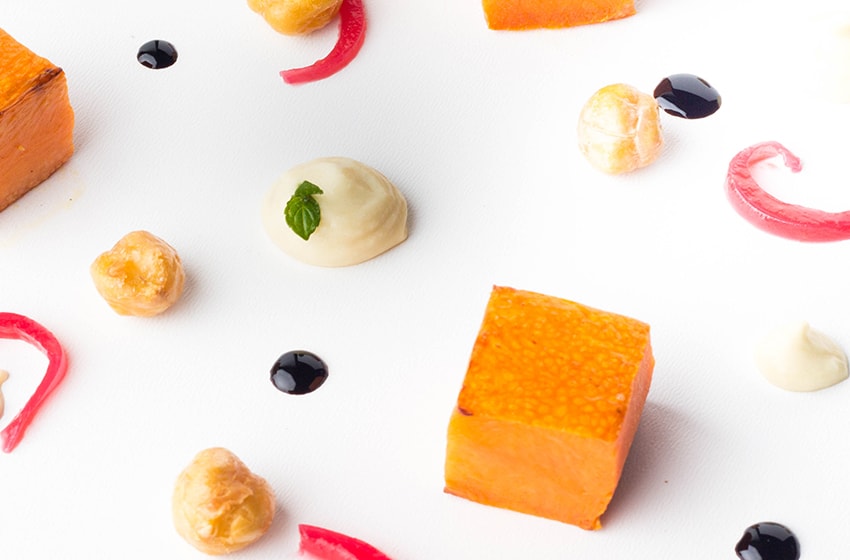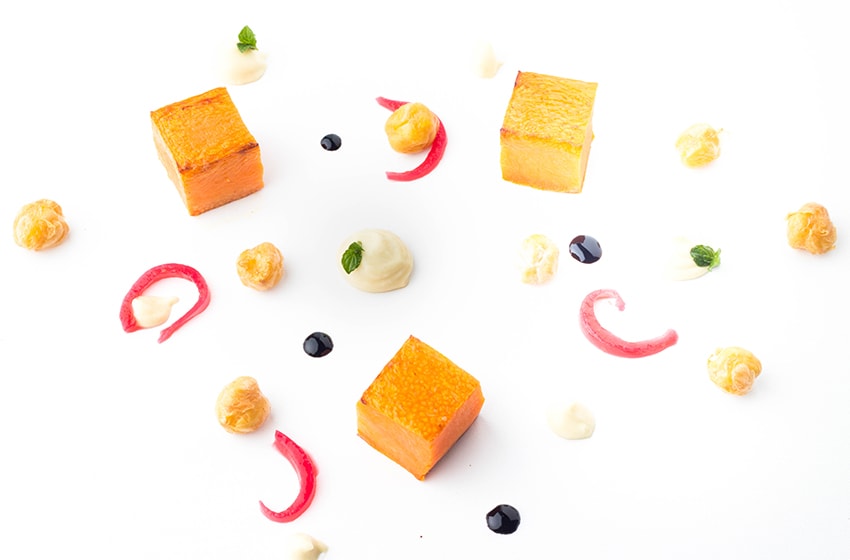Blog
A trip in the world of catering
Native to South America, it is one of the most anciently cultivated plants. We are talking about the pumpkin, the autumn vegetable par excellence, one of the main
ingredients of folk cuisine, which has over time gained a very important place in the best restaurants of the world, thanks to its sweet taste, delicate aroma, high malleability and easy of pairing with other ingredients.The pumpkin should always be present on our tables since it is an excellent source of vitamins and antioxidant substances, as well as an appropriate food for low-calorie diets, thanks to its very low glucidic and lipidic counts, balanced by high percentages of fibres and mineral salts.
A versatile vegetable which can be consumed cooked, fried, steamed, boiled, baked or cooked in a pan; the important thing is to respect cooking times in order to render the pulp tender and to avoid losing all of its organoleptic properties due to the use of heat.
Everything changes in the kitchen if we use waveco® and its induced maturation©. Thanks to this innovative technique, we can preserve all the properties of the pumpkin, significantly reduce the preparation times and always achieve an incomparable result in terms of tenderness and nutritional aspect.
Let’s test waveco® with the preparation of “Marinated pumpkin with fried chickpeas and emulsion of chickpeas and onion soaked in fermented raspberry”. For this recipe, use: a pumpkin, 220 g of dry chickpeas, an onion, raspberries, white wine, and extra-virgin olive oil.
MARINATED PUMPKIN
Clean the pumpkin, cut it into cubes, put it into a bag with the white wine and start the induced maturation® process for 60 minutes. At the end of the process, we will have an uncooked yet tender vegetable with a pleasant texture to the palate, which will have absorbed the marinade more easily, evenly and quickly than with more traditional techniques.
TECHNICAL FOCUS: MARINATION
Marination is a technique used to flavour, preserve, tenderize and cook foods. The food is “attacked” by the acidic base of the emulsion and thanks to a physical-chemical process called Osmosis, through which two liquids of different concentrations pass through the membranes to equalize on the two sides; the aromas (and the acid) penetrate the fibres, thus seasoning and tenderizing foods at the same time. The duration of the marination process may vary and take from 24 to 36 hours.

MATURED CHICKPEAS
Take about 220 g of dry chickpeas, put them into a bag with some water and start the induced maturation© for 60 minutes. In the end, we will have a raw legume with an incredibly pleasant texture on the palate, which has maintained all its nutritional properties as well as its beautiful original colour. Furthermore, thanks to waveco® you do not need to soak chickpeas in water for a long period of time to make them more tender or rehydrated.
TECHNICAL FOCUS: DRY LEGUMES
The secret to cooking dry legumes is to use a delicate, slow, long cooking process over a low heat after having soaked them in water for about 24 hours to rehydrate them and render them more tender. Soaking is essential for good preparation since the starch and the soluble fibres contained in the legumes, if not rehydrated and directly heat-treated, become even harder, thus making legumes unpleasant to eat.
ONION SOAKED IN FERMENTED RASPBERRY
Take the raspberries and put them in the bag and add an alcoholic base, start the induced maturation© process for 60 minutes. Let the compound rest for about two days in the fridge in order to activate fermentation; then blend the compound and sieve it.
Take an onion, julienne it and put it in a container while adding the liquid of the fermented raspberry and start the induced maturation© for 60 minutes.
At the end of the process the onions will have a bright colour because of a more even penetration of the fermented raspberry with no signs of oxidation (because no heat is used to prepare it) and will feel more tender and tasty on the palate.
TECHNICAL FOCUS: SOAKING
Food soaking is a technique in which a liquid ingredient, such as an emulsion of water and oil, is combined with a solid food, such as a vegetable. The liquid penetrates the food by means of heat or long marination to provide a unique taste and texture.

PLATING
Take the chickpeas, drain and divide them: blend one half with extra-virgin olive oil and then sieve the mixture. Fry the other half. Take the pumpkin cubes, sear them on both sides and lay them on a flat plate. Add the emulsion of chickpeas, the fried chickpeas and the raspberry-soaked onion.
CHEF FOCUS
With waveco® we can rewrite the soaking methods of a solid element, such as the pumpkin. Thanks to induced maturation© we can prepare emulsions of chickpeas from raw ingredients, with no need to tenderize them through rehydration in water for 24 hours, or cook them. We can also prepare perfect fried chickpeas, avoiding the long cooking and drying process.
The onion soaked with raspberry takes advantage of the use of waveco® too: we have saved time in the fermentation and soaking processes, resulting in a food with a bright final colour which has preserved all its nutritional properties as well as its taste; a real culinary discovery, which it is now possible to achieve.